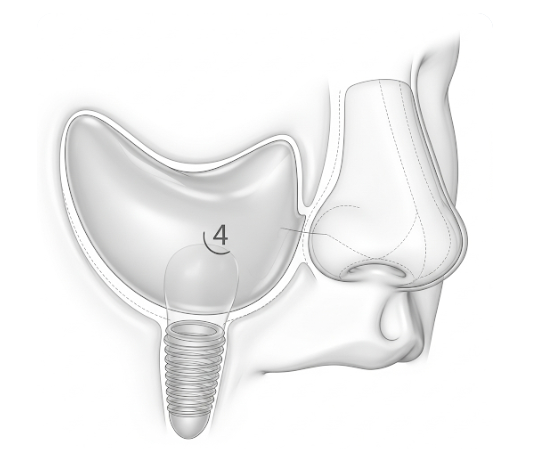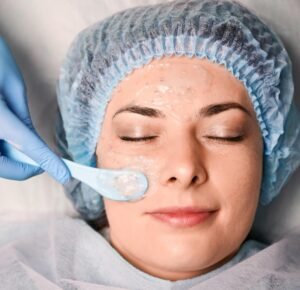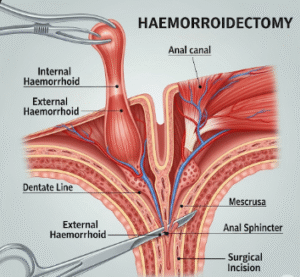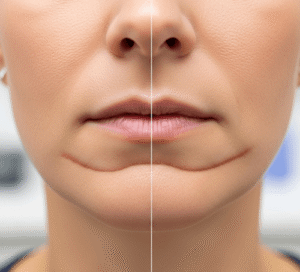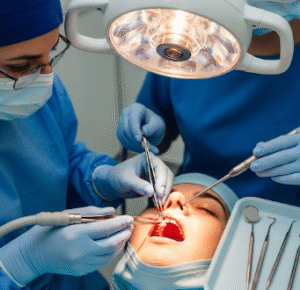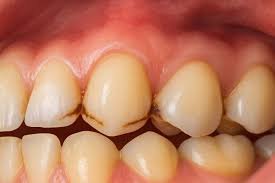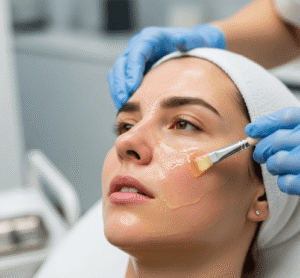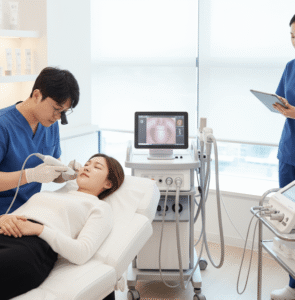What It Is
Paranasal augmentation with an implant is a cosmetic surgery that enhances the midface area, specifically the region around the nose and under the eyes (paranasal region). A weak or sunken paranasal area can make the face appear flat, tired, or aged. By placing an implant in this region, surgeons can create a more balanced facial contour, improve projection, and achieve a youthful, three-dimensional look.
In Korea, this procedure is commonly performed by facial plastic surgeons who specialize in contouring surgeries, often combining it with rhinoplasty or cheek augmentation for overall harmony.
Why It’s Done
Patients consider paranasal augmentation to:
- Correct a flat or sunken midface appearance
- Improve harmony between the nose, cheeks, and upper lip
- Reduce the appearance of a long or protruding nose by balancing facial proportions
- Enhance facial youthfulness by adding midface support
- Improve smile aesthetics by reducing deep nasolabial folds
This surgery is especially popular among patients seeking softer and fuller facial features.
Alternatives
- Fat grafting: Uses the patient’s own fat for natural augmentation, though results may partially absorb over time
- Dermal fillers (hyaluronic acid): Non-surgical and temporary, ideal for patients wanting to “test” the look before implants
- Cheek implants or augmentation: Focuses on the lateral cheeks, which may be combined with paranasal augmentation
- Thread lifting: Can improve folds but does not restore true midface volume
Implants are preferred for patients seeking long-lasting, stable enhancement.
Preparation
Preparation for surgery typically includes:
- Consultation: Facial analysis and discussion of desired outcomes
- Implant selection: Choosing the right material (silicone, Gore-Tex, Medpor) and size for facial balance
- Medical evaluation: Blood tests and anesthesia clearance
- Lifestyle adjustments: Avoiding smoking and alcohol for 2–4 weeks before surgery
- Medication review: Stopping blood thinners and supplements that increase bleeding risk
How It’s Done
The surgery is usually performed under local anesthesia with sedation or general anesthesia, lasting about 1–2 hours.
Steps include:
- A small incision is made inside the mouth (upper gum area), leaving no visible external scar
- A pocket is created in the paranasal region
- The implant is inserted and precisely positioned for symmetry and natural contour
- The incision is closed with dissolvable sutures
Recovery
Recovery after paranasal implant surgery is typically smooth:
- First week: Swelling, tightness, and mild bruising around the midface
- Stitches: Inside the mouth, usually dissolve on their own
- Daily activities: Most patients resume light activities within 3–5 days
- Final results: Swelling gradually subsides over 2–4 weeks, with full results visible in 1–3 months
Possible Complications
Though safe, possible risks include:
- Infection (rare, minimized with antibiotics)
- Implant shifting or asymmetry
- Prolonged swelling or bruising
- Numbness around the upper lip or gums (usually temporary)
- Rare need for implant removal or replacement
Treatment Options in Korea
Diagnosis
- Facial analysis with 3D imaging for precise planning
- Consultation to determine whether implants, fillers, or fat grafting are best suited
Medical Treatments
- Pain medication and antibiotics after surgery
- Oral rinses to maintain hygiene and prevent infection
Surgical or Advanced Therapies
- Paranasal implants (silicone, Gore-Tex, Medpor): Long-lasting and stable
- Combined rhinoplasty + paranasal implant: Common in Korea for full midface harmony
- Hybrid approach: Implant plus fat grafting for volume and softness
Rehabilitation and Support
- Scar-free recovery since incisions are inside the mouth
- Regular follow-up appointments to monitor healing
- International patient services with translation support, hospital coordination, and telemedicine aftercare

